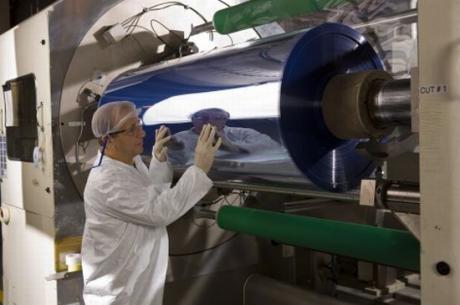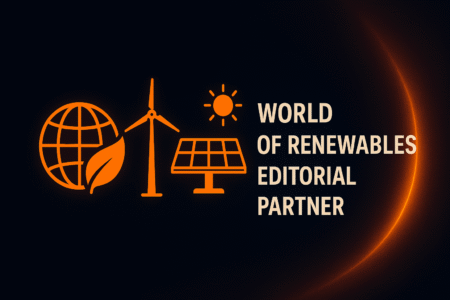Printed RFID, OLED displays and printed photovoltaics offer the greatest long-term opportunity for print equipment manufacturers
Based on primary research and expert analysis, Novel Applications for Printing Technologies takes an in-depth look at novel printing methods and potential markets over the next 10–15 years. This brand new report forecasts global markets for the latest technologies, including printed electronics, biomedical applications, 3-D visualisation and printing, food printing, printed textiles and nano-printing.
For this study a novel printing application is defined as the use of a recognisable printing process to produce a product outside the normal remit of commercial and industrial printing and packaging companies.
In total, hundreds of novel applications were identified, screened and assessed, and the top 32 were selected and profiled in depth in this major new study. The opportunities were evaluated on a scorecard that measured of attractiveness of the novel sector, the potential size of the market, the skills and requirements for printers to join, and the entry barriers.
The study finds that tag applicators will dominate the printed RFID sector until 2012, when online printing on presses will be common as costs fall. Applicator unit or additional print units by 2012 will be common. Cost reduction will be necessary for take-up.
Adoption of printed RFID has been slower than many predicted. RFID uses tags to receive and transmit radio signals to readers or interrogators. Active tags have a power source, typically a battery, and are expensive. Passive tags receive power from the radio waves, they are much cheaper and offer the greatest opportunities for printed RFID in the near future. RFID offers great improvements in logistics and only cost is holding it back. The readers are expensive but the tags are the crucial cost. Barcodes are effectively free and trillions of products are barcoded. A cost of $0.01 per tag will add billions of dollars to the logistics process. Printed RFID reduces tag costs. Printed RFID tags introduced in highvalue sectors will help take-up in more mainstream sectors.
By 2020 OLED displays will be a viable alternative to paper for books, newspapers and magazines. Clean rooms will be one of the requirements of success, according to the study. E-readers and public displays will grow on trains, buses and transport stops, plus retailers and public areas; attracting advertising and promotional revenue.
Manufacturers are looking for inexpensive ways to produce bigger OLED displays on flexible substrates to use as room lighting. OLED TV displays with 40in diagonal screens have been introduced but movie screens are some way off. Current concepts for largearea OLEDs have reached the limit of manufacturing and quality. Printed OLEDs could be the solution. OLED displays are more energy-efficient than liquid crystal displays (LCDs), which require a backlight, especially when the image content is largely dark areas, often the case with movies. OLEDs offer sharper contrast than a conventional backlit LCD and achieve contrast levels of up to 1 million to 1. With no need for a backlight, they can be made very thin. Manufacturers have already introduced OLED screens that are 3mm thick.
The study finds that photovoltaics will offer potential for web-fed print experts to coat, print and finish large volumes to very high specifications. Huge volumes of low-cost, reasonably efficient solar panels will be widely used. Printers could be contract manufacturers in emerging countries with no power utility grid. There will be tremendous opportunities to develop and market the fluids and inks.
Increasingly, the new photovoltaics will be co-printed with batteries and other components. According to the study, they will even form part of the new industries concerned with stretchable electronics in healthcare and electronic smart packaging. People are working on edible electronics and electronics that morph into different shapes. Wristwatches are being developed that charge the battery from transparent photovoltaics over the viewing glass, so the battery lasts longer than the watch. Photovoltaic power sources in space satellites need radiation and heat tolerance, very high efficiency and very light weight. They have complex multilayer constructions using thin films, often involving gallium and germanium. Broad widths of tape unrolled alongside hundreds of kilometres of road could power signage and lighting; here cost is more critical than efficiency. New organic photocells made by high-speed printing may provide cost benefits even at 5–6% efficiency, although new materials and methods may do better.
The study concludes that the pace of technological change will make the market very different from today, with print products commonly incorporating electronics or biomedical functions along with text and images. Print will be much broader than now, there will be major opportunities for printers and suppliers of printing equipment and consumables, but not in the usual places.
The economic situation will change eventually, but it is unlikely that the boom times will return. Several key drivers are likely to force change in the print industry: more cost pressure, faster turnarounds and higher quality, the internet, and the environment. The internet replaces much print and the cost of print forces buyers to explore alternatives; some buyers will be happy with the alternatives and will not go back to print. The environment is becoming significant as brands seek to publicise their green credentials.
Many print products are not seen as environmentally sustainable and alternatives will be sought. For example, Nike and Timberland are moving away from PVC banners and signage in their US stores. These trends create a real shift in the market and although there will still be huge volumes and very large runs, there will be continuing growth for shorter runs with less waste and possibly more personalisation. More personalisation will increase the shift towards digital printing.
When the upturn does arrive, the surviving companies should be well placed to take advantage, albeit in a declining market for ink-on-paper printing. The decline in printing and binding will be offset somewhat by print companies adding additional services to their portfolios, such as web and electronic product design and production, data management, stock management and distribution, mailing, fulfilment, sourcing and procurement and wider project management services. Many companies will look at the new potential markets and invest in electronic printing, biomedical printing, food printing or nanoprinting, using their transferable skills in project planning, data manipulation and precision printing.
Novel Applications for Printing Technologies <http://www.mailm.co.uk/11/link.php?M=2126572&N=1635&L=3580&F=H> is available now for £2,950. For more information, please contact Stephen Hill on +44 (0) 1372 802025, stephen.hill@pira-international.com <mailto:stephen.hill@pira-international.com> www.pira-international.com/businessintelligence <http://www.mailm.co.uk/11/link.php?M=2126572&N=1635&L=3579&F=H>
Press contact: For editorial queries, details of the report or an expanded article please contact: Rebecca Leigh +44(0)1372 802207 rebecca.leigh@pira-international.com <mailto:rebecca.leigh@pira-international.com>
Pira International The worldwide authority on packaging, paper and print industry supply chains
Established in 1930, Pira provides market research, strategic and technical consulting, testing, publications and events to help clients understand market trends, identify opportunities, evaluate product performance, meet compliance requirements, network and develop strategies to grow their business.










